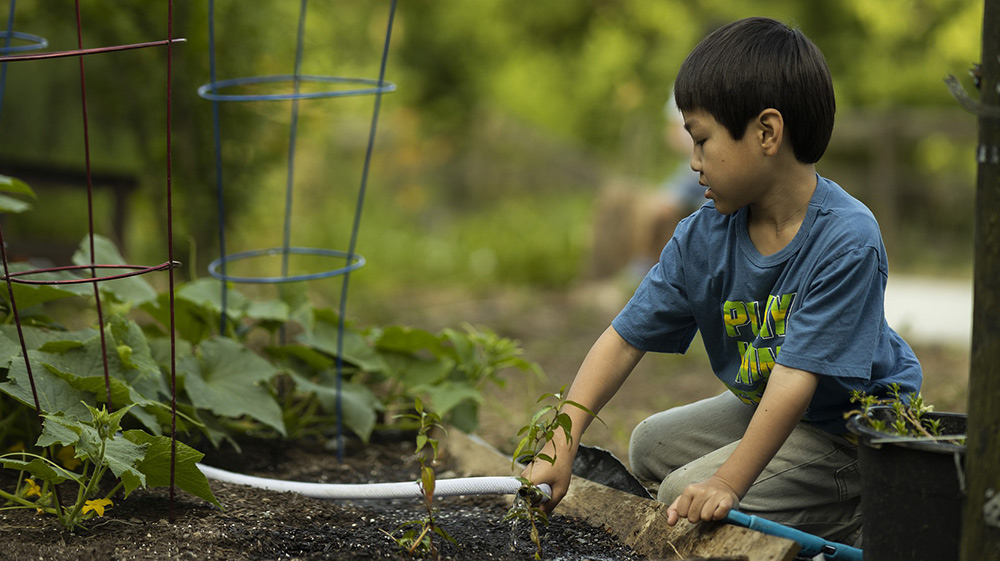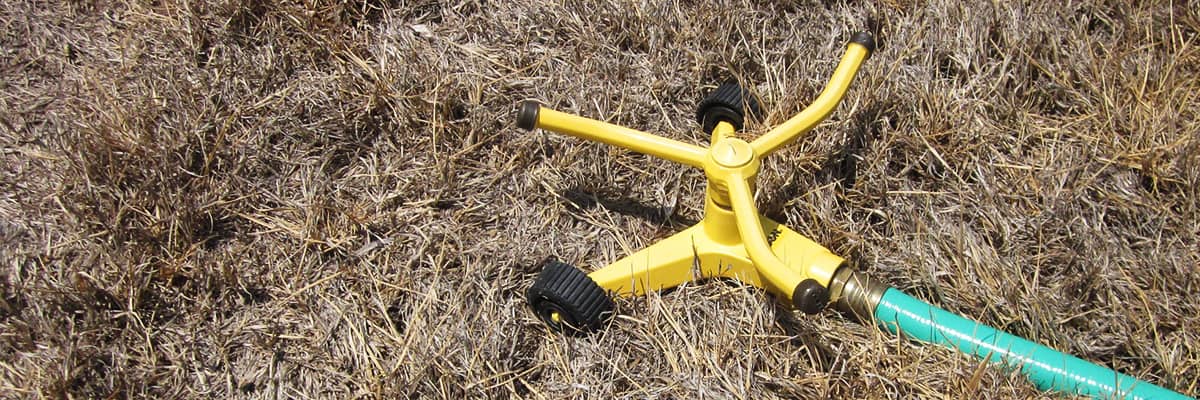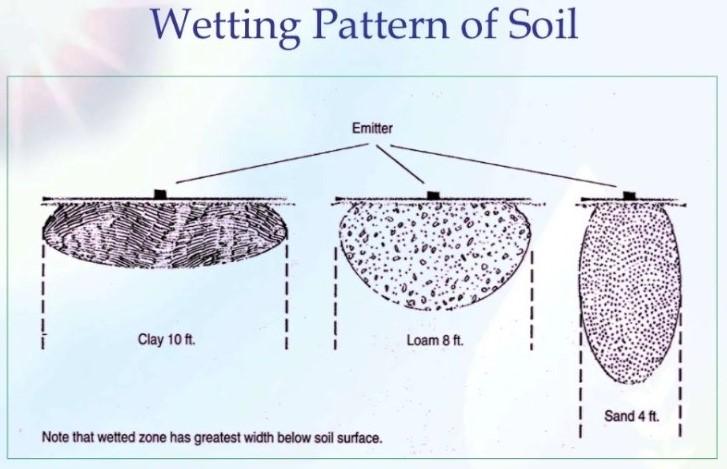
OK, well if it isn’t, it should be! Is “nowhere” better? Regardless of the adverb, there is certainly a shortage of water in the root zones of central Massachusetts plants. In fact, in the many years I have watched such things, this is about the driest I have ever seen the landscape. Now I am not here to wax on about the woes of the modern-day plant. Rather than complain, I want to provide some solutions to help the plants in or around your yard.
The obvious answer is to water. But how you water makes a huge amount of difference in how much water is actually used by the plant, and how much water is wasted. Sprinklers are the most common tool for most folks: oscillating, rotating, fixed spray, or whatever. Sprinklers can be effective, quick, and fairly inexpensive. However, they are also terribly inefficient. Let me touch on a few key facts and myths.
Fiction! I have heard some very reliable sources make this claim. The science doesn’t support it at all. Fifty percent evaporation has been claimed by some regulatory agencies. That seemed wrong to me, so I contacted some irrigation experts in other parts of the US. Areas where summer winds are nearly constant and humidity is far lower than in New England. These are areas that strongly favor rapid evaporation. To a person, they scoffed at the 50%. While opinions varied to a degree, all said even just 5% was an extremely high estimate. Lot of other reasons exist to not use sprinklers, but this is not one of them.
Fact! Soil can only absorb a certain amount of water per hour. Any water more quickly will simply run off into streams and storm drains. We could have a discussion on whether runoff into streams was bad, but little argument can be made to support runoff into catch basins, sewers or storm drains. If your sprinkler puts out more than about 1/4 inch per hour of ‘rainfall equivalent’, or less on sloped areas, you will be wasting water. Sprinklers also hit a lot of areas that don’t need to be watered.
Fiction! Most grasses in our area are able to go dormant when water is limited. They may look dead, but after a few rains, they will spring back to life like the phoenix. You may want to water your lawn, but you don’t have to.

Well, hand watering is an option. Frankly to me it isn’t a particularly good option. If you are at all like me, you get bored standing there with a hose. Even with your favorite beverage in the other hand. Likely you rarely stand and water any given plant for close to a minute, nevermind 5 or 10 minutes. As mentioned above, soil only absorbs water fairly slowly. So patience is a virtue. I know I don’t have even close to that amount of patience.
 The concept is essentially the opposite of hand watering. Small amounts of water are applied over a very long period of time. So the water can soak down deep and wide, maximizing the plant benefit, and minimizing the amount of water used. It is the best form of irrigation, bar none!
The concept is essentially the opposite of hand watering. Small amounts of water are applied over a very long period of time. So the water can soak down deep and wide, maximizing the plant benefit, and minimizing the amount of water used. It is the best form of irrigation, bar none!
But how do you start with drip irrigation? On the simplest level you turn a hose on to a very slow trickle, leave it at the base of a plant, and come back later to move it to the next plant. If you have a lot of plants this can get difficult, but for a few key plants, it is very practical and as long as you have a hose, it requires no additional cost.
I promise not to make your eyes roll back in your head. Take a brand-new roll of paper towels. Turn it on its side and slowly pour a tablespoon of water onto one spot in the middle. The water spreads out a lot to the sides, and deeply down towards the core. It is the same with soils. Water moves through capillary action. While the action may differ a bit with soil type (just as with different brands of paper towels). Sand is the ‘quicker picker upper’. Water moves quickly downward and less quickly to the sides. Conversely clay soils act the opposite way: water moves sideways faster than downward. The photo attempts to show this concept. This sideways movement is why drip irrigation is so effective and efficient.
Common brands of drip irrigation will emit about a half-gallon of water per hour, per hole. I call them holes, but they are actually carefully designed emitters, that precisely limit and measure water flow. These holes might be spaced anywhere from 1.5 feet to 4 feet apart. Just choosing 2 feet apart as an example, using a supply of one gallon per minute, this is a slow trickle from your hose, will supply about 250 feet of drip line. Yes, that’s not a mistake, 250 feet!
Drip, by design, needs to be left on a long time, 4-8 hours generally. Just like the tortoise, drip wins the race through patience and perseverance. The other good news is that drip irrigation is specifically allowed to be used even during daytime watering bans. Massachusetts Department of Environmental Protection wanted to reward those who are using water most efficiently.
After reading all of this you must think we sell drip irrigation supplies. We do not, although maybe we should. There are a number of local and online merchants who do stock a wide range of drip supplies. I buy dripper line by the mile, so I’m really not sure what direction to send a homeowner. If you get stuck, email me, and I can try to come up with a suggestion.
I have spent a great deal of time thinking about water use, to make life better for both you the homeowner, and the planet. I am passionate about it! While I am hopeful that the rain in the upcoming forecast will materialize, as the late horticultural legend Paul Rogers used to say “A forecast never watered a plant.” I will end simply with “Happy Watering.”